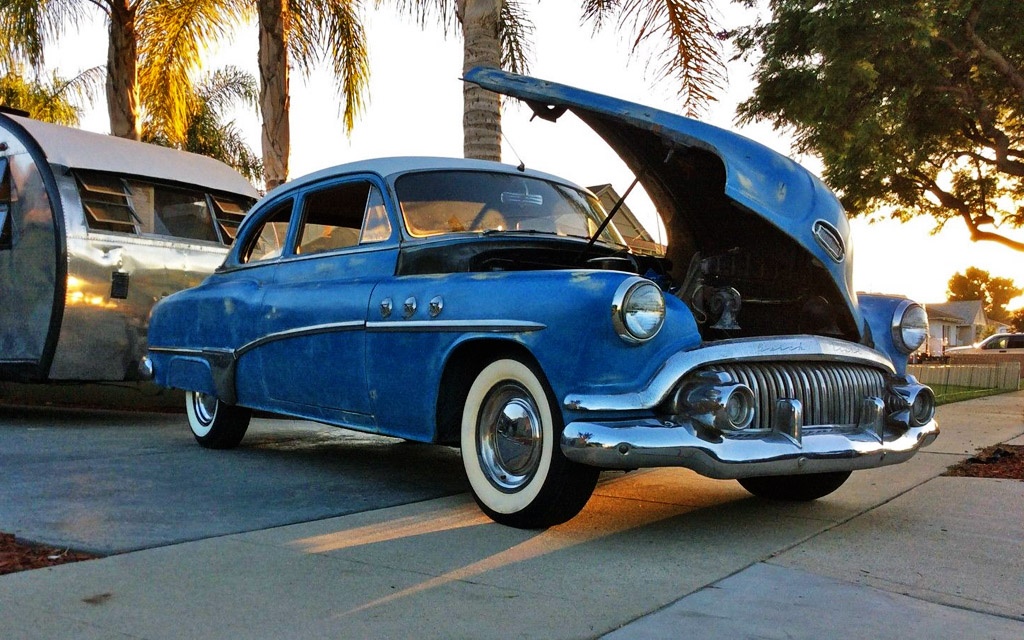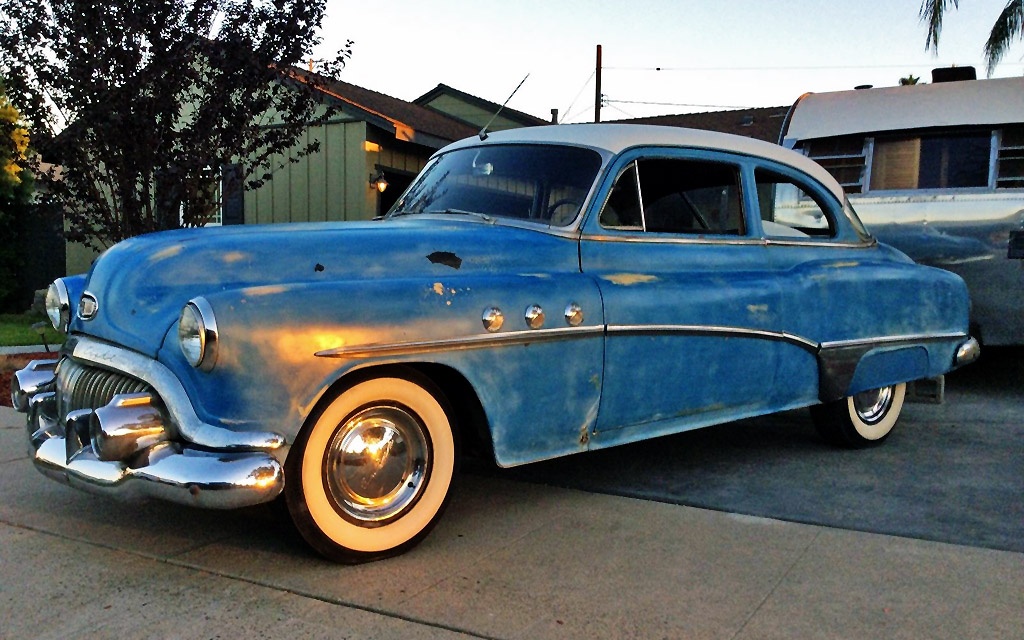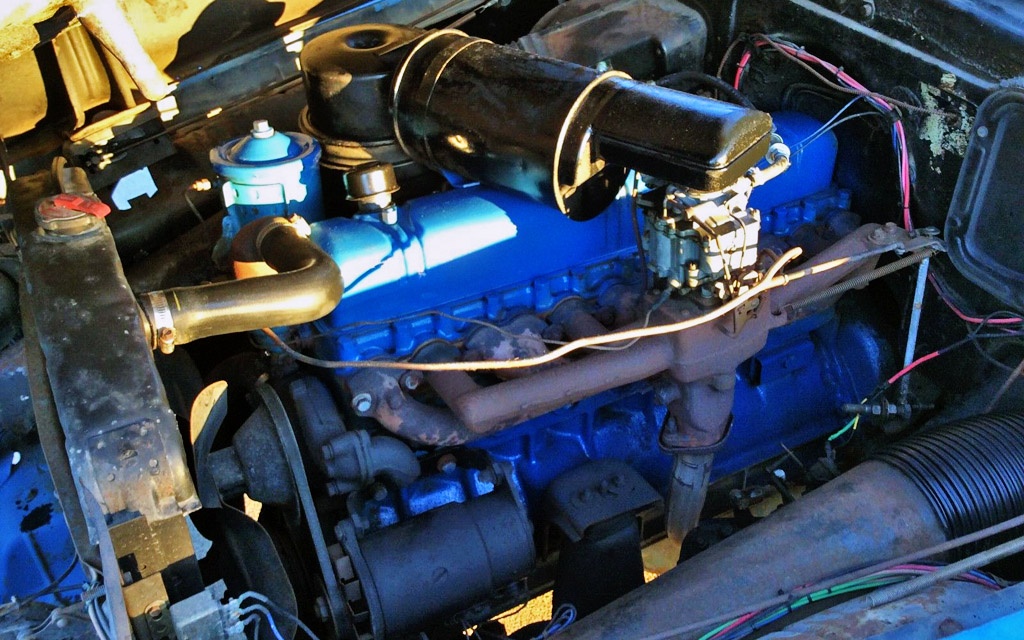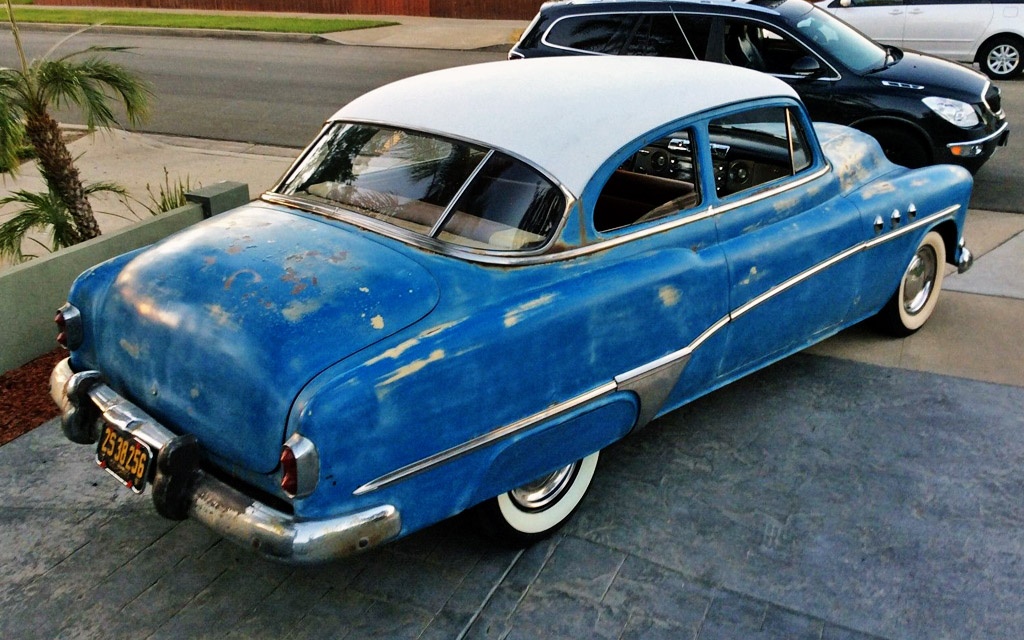The saying “it’s only original once” gets thrown around here quite a bit and it has me wondering where the line is for originality. Of course everyone has a different view and opinion on this subject, so giving the term an exact definition is rather difficult. My curiosity about the term really piqued when I was looking at this 1951 Buick Special Coupe that I spotted here on eBay for $6,500. Parts of the car have been left untouched and are worn by time, while others have been restored to make it drivable, reliable, and safe. So that leaves me wondering if a car must remain untouched to be classified as “original” or if a certain amount of work can be performed without impacting “originality”?
The vast majority of us like driving our classics, so investing the time and money into making them safe to drive seems like a reasonable choice. Of course those that believe in the strictest meaning of the word survivor would likely argue that any major amount of work ruins the originality, as the car is no longer as it was when it left the factory. This brings me to an interesting issue that makes the whole situation more confusing. What about old and unsafe tires, belts, and brakes. Are disposable components not included in the originality equation? If these parts can be changed, what about other components that tend to wear out?
Speaking of parts that wear out, the engine was worn and tired when this Buick was found. The seller decided to rebuild it, but it appears that many of the components are original. They didn’t provide any details about what all was done to the motor. Getting a motor running and performing a complete rebuild are two totally different things, but it may have been necessary to rebuild this straight 8 to get it up and running again. I personally find the originality of mechanical systems to be the most difficult to define, as many parts wear out and will eventually need replacing no matter what. Typically my first concern isn’t whether the engine has been rebuilt or not, but if it is original to the car. Seeing as how many components are going to need replacing anyways, I find I’d rather have a rebuilt motor with all new seals than an old leaky one that will need everything replaced anyways.
The inside of this Buick is a great example of a survivor, with all the original pieces still in place. It is showing its age, but is in good enough condition to be used as a driver. The seller admits the headliner needs replacing, but that isn’t an issue that really impacts drivability. To make it a more enjoyable and reliable drive, the electrical system has been upgraded to 12v, the ignition system has also been upgraded, and so has the fuel system. While I feel reversible upgrades like these have little or no impact on originality, I do find what has been done to the body as being a rather large issue. Those of you who know your Buicks surely noticed immediately that this one has been modified. The seller barely mentions the fact that it has had the door handles shaved and the front and rear trim removed. While these aren’t huge modifications, they leave me wondering what else might have been changed.
This Buick has a rather interesting look to it, especially with the modifications that have been made to it. The seller calls it patina, but that isn’t the word I would use to describe it. Don’t get me wrong, when it comes to paint I would take dull, scratched, and lack luster original paint over a respray. With original paint, you know what you’re getting and what issues you might be facing. This Buick has had many of its issues already addressed, but there are still a few major ones that will need attention. Had the body been left alone, I might go as far as to call this car original, but there has been too many irreversible modifications made to it. Now does that mean it wouldn’t make for a fun project? Of course not, it would still be a blast to own. What I am saying is that I wouldn’t describe it as being original. For me, originality isn’t about every little piece factory, but if the major components are original to the car and if the body is untouched. So what is your definition of “original”?







In my opinion originality means the origin of where it started from. I think original should mean in the original state.
We grew up with Buick’s like this one. My father was a Body & Fenderman for a Buick Dealer in The Bronx ( Falcon Buick)
“Original?” For starters, that old Buick certainly is not. In additional to the shaved hood, deck and door handles, it has been repainted with a color change (eBay photos of trunk show what appears to be yellow on the inside lips and around the hinges_ below the beltline, and the roof’s white is way to nice for the condition of the rest of the car. Admittedly, I’m far from an expert on old Buicks but the deep red plush carpet certainly does not look original, and I have some doubts about the seat covers and door panels also.
To me, original means original, i,e, factory applied, paint and factory-installed interior, factory wheels and wheel covers (if applicable) with OEM-size tires. Mechanical systems and components should be factory installed (rebuilds okays) for major pieces like engine, trans and rear axle. Rebuilt 9and often on exchange basis) items like generators, water pumps radiators should be OE-specification. I believe cars should be driveable so safety items like brakes should be upgraded from mechanical (cable or rod-actuated) to hydraulic.
Patina is a sorely overused term.A maintained old paint job usually has a soft, warm glow but never the depth of a clear-coated paint and not the look of a “cut and buffed” paint job. That old Buick just looks like scheiss to me. Most of the car has been redone at one time of another, and not particularly well. Redo it inside and out, respectfully, plate the trim pieces, and enjoy it.
I was the second owner of a ’59 Ford low=trim-level two-door sedan. it had 36,000 miles and was around 18-20 years old when I bought, was in extremely nice, never-wrecked, original condition. When I sold it about 15 years later, it had amssed about 3,500 additional miles and was still in superb cosmetic and mechanical condition, and was accompanied by a half-dozen or so trophies it has won in shows against restored (and often over-restored) car. I took pride in the ’59 Ford’s originality and condition; I would be embarrassed by that ’51 Buick in its current condition.
SoCal Car Guy pretty much said it. Once you change things, like shaving the handles, ect., then it’s not original anymore.
i am more interested in the trailer in the photo. as for the car i like daily drivers so there has to be some changes to make it safe and useable. if you are buying a vehicle that is what an in person inspection is for. also paperwork that matches the claims being made. as to the word games that are being played by buyers and sellers, i am not going there. nice find
A few thoughts about original or not….
Original:
– the actual paint that was applied by the factory
– rebuilding of major components, including the use of new OEM or equivalent wear parts like bearings, pistons, etc. The original major components (engine, transmission, differential) need to be used as the basis of the rebuilds.
– the same exact interior and trunk components and trims that the factory installed including seats, seat coverings, carpets, door panels, etc.
Not original:
– a repaint in the same color that was applied by the factory
– a replacement engine of the same type as the factory installed
– retrim of the interior using the same type & color of vinyl that the factory used
Not an issue because of routine wear & tear / safety considerations:
– new tires of the same size and type as the originals
– new consumables like hoses, brakes, brake hoses/lines, exhaust pipes/mufflers, bulbs, etc, but need to be OEM or the same type as originals, i.e., no Xenon metal halide headlight lamps if not originally fitted by the factory.
Wiggle room, to be judged mainly by the person who is handing over the cash (the buyer), and must be disclosed before the deal is completed:
– replacement of certain coatings or major components that could undergo hard service during normal use or are known to be marginal in a particular make/model/year vehicle, e.g., automatic transmissions, exhaust manifolds, engine or radiator paint, etc, especially when a normal rebuild usually includes repainting of a component to reduce rust/corrosion.
Original, to me, is exactly what it says: original. But that also means maintained. As mentioned by Dolphin, maintenance items need to be replaced/rebuilt from time to time to keep the car on the road.
My ’49 Chev. is about as original as a car can get. However, since I’ve had to rebuild the cylinder head (due to a burnt exhaust valve), some say it isn’t original. The radiator needed a recore, which I consider maintenance. None of the belts and hoses are original, and neither is the fuel pump. Water pump is original and will remain that way until it starts to make noise or leaks.
I’ve got to pull the engine and transmission very soon, for no other reason than to replace the main bearing seals and reseal the transmission. The clutch chatters badly so that’s going to be replaced while I’m at it. Of course I’ve got a lot of oil that went into the starter so that will need the Summer’s Eve treatment as well. While I’m inside the engine I’ll just take a look at the rods to ensure that the babbit is OK.
I’ve got to reseal the rear end too; after all it’s 65 years old and is fully within its right to leak a bit. While I’ve got it apart I’m going to have a look to see if everything is OK for continued driving. After that I’m going to put it all back together and continue to drive it. Maybe I won’t have to use such a large drip tray underneath it.
Aside from all that it needs door and window seals, and while I’m at it, I’d better do the trunk as well.
In short, purist, original people will insist that my car is no longer original. I won’t argue with them because in my mind, I’m merely maintaining it.
That paint looks like it was done with a rattlecan and some 320 grit, to look like “patina”. Personally I’d put a decent paint job on it and cruise it. “Original” is only a good thing when it still looks good.
I had a ’52 Buick Special in my much younger days. If I had this one, I would consider it a candidate for restoration. It is no where near original . Interior non original, body needs rust repair and handles and trim brought back to original. Too many mods on engine. This Buick is capable of being safe on the highway in its original form. It will keep up with traffic on interstates and will lock up the wheels in a panic stop. Brakes will however, over heat and fade on long downhill grades.
It all depends on why you want to own an old car. An investment? Something to put in the living room and admire? Something to drive? I have a friend with an “over restored” MG TD. My college roommate had one, “original”, so I have some basis for saying they never came out of the factory this good. He does not dare drive it, it might get dinged or scratched, or some mechanical component might fail, so it sits – maybe a garage find some day. On the other hand, a friend has a ’56 Ford Crown Victoria, which was nosed and decked in the early 50’s, an aftermarket Continental kit, added in the late l950’s, and recent radial tires, a dual master cylinder, seats with headrests (the old seats are in the garage), shoulder and laps belts, rebuilt original engine and transmission, electric fuel pump, and who knows how many replaced water pumps, plugs, points, batteries, tires, etc. It gets driven at least once a week except in winter and because of the head rests, seat belts, dual master cylinder and radial tires is reasonably safe. I bet it is enjoyed far more for what it is, than the trailer queens get their owners bragging rights.
I’m with Dolphin and Geomechs.
Original is the paint , interior fabrics and parts that left the factory the day the car was shipped to the dealer…..including the engine and transmisson.
Maintenance and replacng of moving mechanical parts like generators rebuilt or hoses replaced doesnt kill the “original” claim for me
Restored to the original color and interior fabrics because of wear or deterioration makes it RESTORED to Original.(as it was sold)
So one of my cars has the original engine and drivetrain, replaced clutch, color change (not my decision). The color change makes it non original. Though in the market for this car..mine even with the color change amounts to MOSTLY original cause everything that is on the car today is detailed in the Kardex.
And almost all of these cars have been messed with . So…….a windows out repaint to the original color would make it RESTORED to Original Specifications.
Auction ended by seller. No bids made.